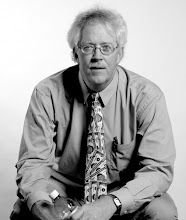Students were placed into teams and asked to make a presentation on some major aspects of life on the Navajo Nation:
A. Navajo Nation Tribal Government & Justice
- Government: Leaders, Format, Membership,
Meetings, Elections
- Justice: Navajo Police, State Laws, Local
Laws, Judicial System, Crime-Punishment
(Joel Farber, Elena Lavorato, Shannon Bolte)
B. Navajo Nation Economy, Workforce, Business and
Industry
- Economy/Workforce: Average income,
Unemployment rates, Education, Leaving-Returning
- Business/Industry: Largest employers, New
ventures/growth, Declining fields
C. Navajo Nation Education and Health
- Education: K-12, Immersion, Diné Coll.:
Founding, History, Programs, Students, Graduates
- Healthcare: Hospitals, IHS centers, blending
traditional and modern medicine
D. Navajo Nation People, Media, Recreation &
Tourism
- People: Population, Average age, Birthrate,
Lifespan, Geographic distribution
- Media: Newspaper, Radio, TV, Cable TV,
Internet, Access issues
- Recreation & Tourism: Parks, Historic
Sites, Museum, Lodging, Rodeo, etc.
E. Navajo Elders, Families, Relationships
(Kelsey Curtis, Kaitlyn Haskie, Kalandria Paul, Shawn Tsosie, Christine Willie)
F. Navajo Respect, Values, Taboos
(Ashleigh Clyde, Lionel Harvey, James McKenzie, Robin McGee, Marla Sandoval-Redhouse)
This class took place via Interactive Television connection between classrooms at Diné College in Tsaile, Arizona, and at Winona State University in Winona, Minnesota. (Unfortunately, the photos make it look one-sided, because the blog editor was in Winona. Beginning next week, student appearance and participation in photos will appear more balanced.)
After class, the Winona students gathered their gear and packed for their trip to the Navajo Nation. The field-work portion of class begins Monday, June 4, on and near the campus of Diné College.
Professor Tom Grier of the Winona State University Mass Communication department is the editor of this blog.
I am a journalist. I use words and pictures to tell the story of something that has happened. Usually, I present information as a set of factual statements -- free of editorial bias -- and let the reader-viewer decide what it means. And this is what I teach my students to do. This blog is different. Consider the blog as a set of images, thoughts and ideas. It may lean a bit away from strict journalism. The editor's opinion may become evident in some posts, like now.
This class -- the fourth year of this highly successful program -- may be the best ever. I mean no disrespect to the students in 2009, 2010 and 2011 who worked hard and created museum quality documentaries that will stand as important historic and ethnographic documents for decades and centuries to come. Their documentaries have also become treasured pieces in the families of the elders they interviewed. Somehow, though, I believe this 2012 class go above and beyond the work of their predecessors.
These students are totally engaged in the project. They come to class prepared and are genuinely excited to be able to participate in such a meaningful project. They bring an amazing diversity of talents and skills that they will use as they research, interview and photograph a Navajo elder, and then write, edit and produce a documentary that tells the life story of that elder. They work well together and build on each other's strengths.
It will be quite a journey for each of these students. And you, readers, will follow their activities via this blog.
Please share your thoughts and ideas on this project below under the "Comments" link. Thanks for reading. More to come...







No comments:
Post a Comment